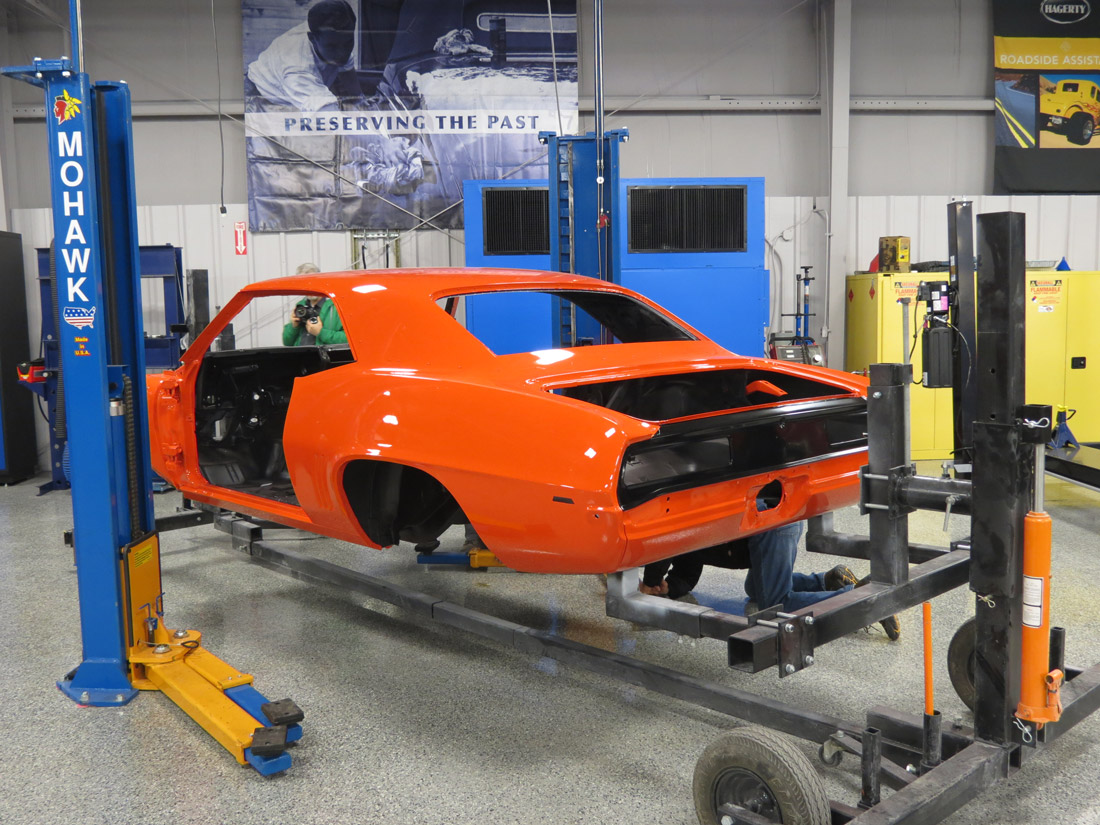“Rotisserie” Restoration
Much like “correct” or “believed to be”, “rotisserie restoration” is an imprecise term carrying an evolving history’s baggage.
When first employed, automobile rotisseries – for sake of clarity, a rack on which a vehicle is mounted and rotated along its longitudinal axis to access top, bottom and sides – was typically employed superficially. A vehicle complete with its body and suspension was clamped up in the rotisserie, then turned over and over (like a suckling pig) to effect a superficial swipe at cosmetics.
Back then a rotisserie restoration was the sign of a quick cosmetic redo.
Today, however, restorers frequently completely disassemble their project, then mount the bare frame on a rotisserie to access its every nook and cranny on the way to a complete, meticulous, show quality restoration. In this process once the frame is cleaned, stripped, repaired, aligned, primed and painted to factory standards or better on the rotisserie the rest of the vehicle, equally thoroughly repaired and painted, is reassembled on the frame to reach showroom or better quality.
The issue – at least from onlookers’ or prospective buyers’ perspectives – is that conflation of the two processes remains.
A rotisserie restoration could be stripped to the bare frame on the rotisserie, then carefully, thoroughly and accurately restored.
It also might be a complete body and frame mounted up on the rotisserie and quickly cleaned with a steam jenny, squirted with some chassis black where the gun’s fan could reach and then reunited with its running gear and trim.
Which is to say that the term “rotisserie restoration” has such broad application that it means, in terms of the quality of workmanship and attention to detail, nothing. Astute, but not all, buyers know of the difference. Consignors do themselves no favors by using “rotisserie restoration”. A prospective buyer needs to review photos of the restoration to assess its extent. Whereas a seller is better off using the more specific term “body off restoration” [never, please, “frame off”].
And in all cases there’s no substitute for a good flashlight and some contortionism. Checking that deep down inside and underneath, where frame and body meet, the hard-to-reach places are treated as well as the ones easily seen. Look into the depths of the engine compartment where things disappear under the transmission tunnel and footwells. Look inside the front fender wells to assess the finish and attention to detail of wiring, sockets and wiring boots. Look for the unpainted shadows of casually applied chassis paint behind fixed mounting brackets.
A “rotisserie restoration” can mean many things. Not all of them are good.



I have a 1930 Model a coupe (all steel body), that I would love to know what you could do to make it shine, It is original with a jump seat. The engine is the original, not currently running. The roof has rust, I know it needs to be filled with some sheet metal. don’t know your location to even have you get a close look at it. Do you do mechanical upgrades?